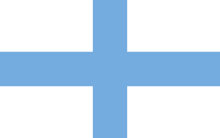
Back الحركة الوطنية الأرجنتينية Arabic Nacionalismo de derecha en la Argentina Spanish Nacionalismo (mouvement politique argentin) French

Nacionalismo was a far-right Argentine nationalist movement that around 1910 grew out of the "traditionalist" position, which was based on nostalgia for feudal economic relations and a more "organic" social order. It became a significant force in Argentine politics beginning in the 1930s.[2] Nacionalismo was typically centred upon the support of order, hierarchy, a corporative society, militant Catholicism, and the landed estates (latifundia), combined with the hatred of liberalism, leftism, Freemasonry, feminism, Jews and foreigners.[3] It denounced liberalism and democracy as the prelude to communism.[4] The movement was also irredentist, declaring intentions to annex Uruguay, Paraguay, Chile and some southern and eastern parts of Bolivia and even the British-held territory of the Falkland Islands (Islas Malvinas) and its dependencies.
Nacionalismo was strongly influenced by Maurassisme and Spanish clericalism as well as by Italian fascism and Nazism.[5] After the 1930 Argentine coup d'etat, Nacionalistas firmly supported the entrenchment of an authoritarian corporatist state led by a military leader.[6] Nacionalistas often refused to participate in elections because of their opposition to elections as a derivative of liberalism.[7] Its advocates were writers, journalists, a few politicians, colonels, and other junior military officers; the latter supported the Nationalists largely because, for most of their existence, they saw in the military the only potential political saviour of the country.
- ^ a b Sandra McGee Deutsch. Las Derechas: The Extreme Right in Argentina, Brazil, and Chile, 1890-1939. Stanford University Press, 1999. Pp. 210.
- ^ Leslie Bethell. The Cambridge History of Latin America: 1930 to Present. Volume VIII. Cambridge, England, UK; New York, New York, USA; Oakleigh, Melbourne, Australia: Cambridge University Press, 1991. Pp. 32.
- ^ Sandra McGee Deutsch, Ronald H. Dolkart. The Argentine right: its history and intellectual origins, 1910 to the present. SR Books, 1993. Pp. xvi.
- ^ Leslie Bethell. The Cambridge History of Latin America: 1930 to Present. Volume VIII. Cambridge, England, UK; New York, New York, USA; Oakleigh, Melbourne, Australia: Cambridge University Press, 1991. Pp. 32.
- ^ Leslie Bethell. The Cambridge History of Latin America: 1930 to Present. Volume VIII. Cambridge, England, UK; New York, New York, USA; Oakleigh, Melbourne, Australia: Cambridge University Press, 1991. Pp. 32-33.
- ^ Leslie Bethell. The Cambridge History of Latin America: 1930 to Present. Volume VIII. Cambridge, England, UK; New York, New York, USA; Oakleigh, Melbourne, Australia: Cambridge University Press, 1991. Pp. 34.
- ^ Leslie Bethell. The Cambridge History of Latin America: 1930 to Present. Volume VIII. Cambridge, England, UK; New York, New York, USA; Oakleigh, Melbourne, Australia: Cambridge University Press, 1991. Pp. 33.
© MMXXIII Rich X Search. We shall prevail. All rights reserved. Rich X Search